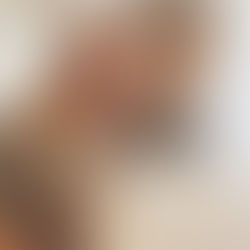We Now Use the DIAGNODent Laser Cavity Detector!
One of the most important things we do for our patients is to find and fill cavities. Since any spot of decay can threaten the integrity of an entire tooth, this is key to preventing a host of future problems. However, traditional methods of decay detection have been shown to be only 40% to 67% accurate: cavities can hide along fissure lines, or inside biting or occlusal surfaces. Further, mechanical exploratory methods are limited to finding only those cavities that are equal to or larger than the probe head.
Enter DIAGNOdent: a revolutionary, thorough means of detecting cavities- that is rapidly becoming the standard of care- earning the ADA Seal of Acceptance. The Diagnodent is a pen-like laser scanner that shines a safe, painless beam into the tooth and checks its health. A numerical reading and an alarm will signal when there are signs of hidden decay. This allows us to determine if decay is lurking beneath the apparently healthy tooth surface. This technology allows us to catch tooth decay at an earlier stage, before the tooth is destroyed from the inside out. This will help prevent more extensive -and expensive- procedures.
A Diagnodent reading under 10 indicates that the tooth has no discernable decay. A reading of 10-20 indicates that there is some superficial enamel softening and the patient's home care may need to be explored and "tweaked" a little bit; 20-29 indicates that the decay is more advanced, but remineralization therapy, rather than surgical intervention (a filling) can be attempted. And any reading over 30 indicates a definite area of decay requiring a filling.
A study conducted by Dr. Lussi of Berne University, Switzerland, in which dentists correctly diagnosed hidden fissure areas by visual inspection in only 57% of all cases! The same group achieved an impressive success rate of 90% with the DIAGNOdent. In fact, DIAGNOdent was far more accurate than any other method in the study including bitewing x-rays.
One of the most important things we do for our patients is to find and fill cavities. Since any spot of decay can threaten the integrity of an entire tooth, this is key to preventing a host of future problems. However, traditional methods of decay detection have been shown to be only 40% to 67% accurate: cavities can hide along fissure lines, or inside biting or occlusal surfaces. Further, mechanical exploratory methods are limited to finding only those cavities that are equal to or larger than the probe head.
Enter DIAGNOdent: a revolutionary, thorough means of detecting cavities- that is rapidly becoming the standard of care- earning the ADA Seal of Acceptance. The Diagnodent is a pen-like laser scanner that shines a safe, painless beam into the tooth and checks its health. A numerical reading and an alarm will signal when there are signs of hidden decay. This allows us to determine if decay is lurking beneath the apparently healthy tooth surface. This technology allows us to catch tooth decay at an earlier stage, before the tooth is destroyed from the inside out. This will help prevent more extensive -and expensive- procedures.
A Diagnodent reading under 10 indicates that the tooth has no discernable decay. A reading of 10-20 indicates that there is some superficial enamel softening and the patient's home care may need to be explored and "tweaked" a little bit; 20-29 indicates that the decay is more advanced, but remineralization therapy, rather than surgical intervention (a filling) can be attempted. And any reading over 30 indicates a definite area of decay requiring a filling.
A study conducted by Dr. Lussi of Berne University, Switzerland, in which dentists correctly diagnosed hidden fissure areas by visual inspection in only 57% of all cases! The same group achieved an impressive success rate of 90% with the DIAGNOdent. In fact, DIAGNOdent was far more accurate than any other method in the study including bitewing x-rays.













